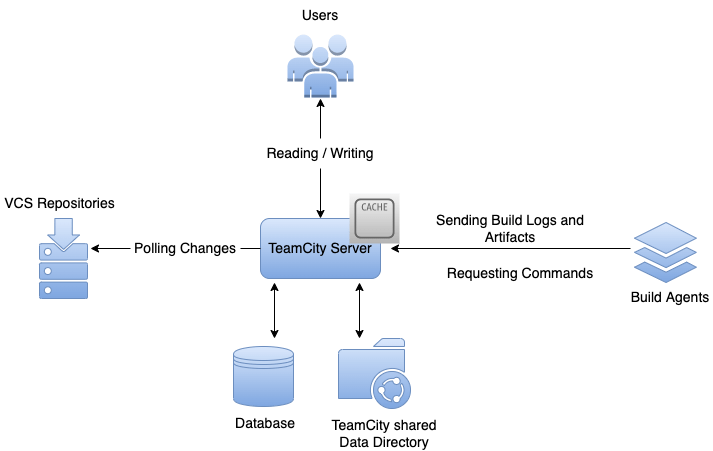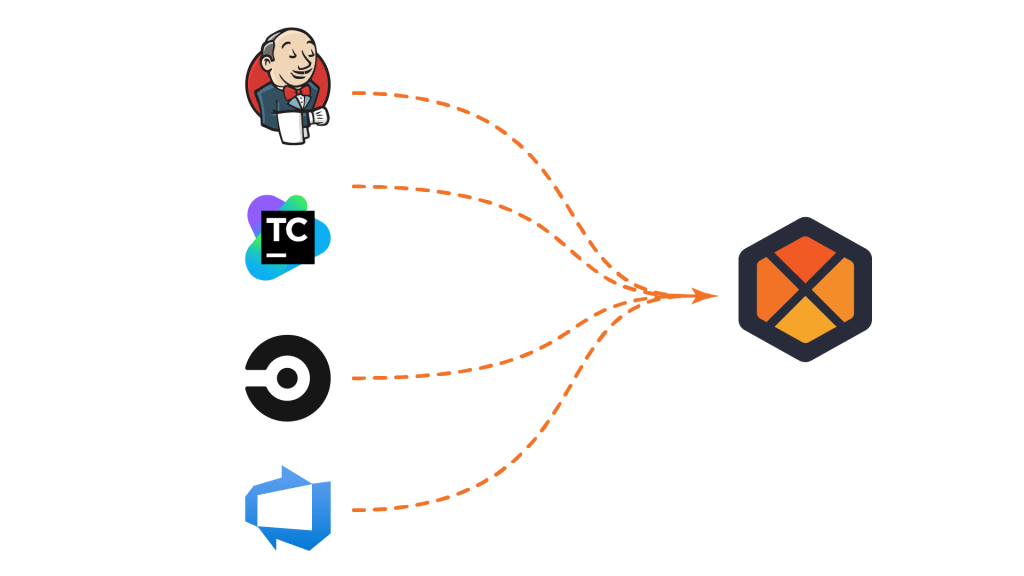
- Introduction to TeamCity
- What is TeamCity?
- Key Features of TeamCity
- How Does TeamCity Work?
- Advantages of Using TeamCity
- TeamCity vs. Other CI/CD Tools
- Best Practices for Using TeamCity Effectively
- Conclusion
In the world of continuous integration and continuous deployment (CI/CD), TeamCity has established itself as a powerful tool for automating the process of building, testing, and deploying software applications. Developed by JetBrains, TeamCity enables development teams to enhance their workflows, improve software quality, and accelerate release cycles. Whether you’re an individual developer, part of a small team, or in charge of a large-scale enterprise software project, TeamCity provides robust CI/CD features to streamline your development process. Cloud Computing Course post will dive deep into the workings of TeamCity, explaining its features, how it integrates with other tools, and why it is a popular choice for software development teams. We will also explore its benefits and why it stands out in the competitive landscape of CI/CD tools.
Enhance your knowledge in Teamcity Training. Join this Teamcity Training now.
Introduction to TeamCity
TeamCity is a powerful Continuous Integration (CI) and Continuous Deployment (CD) tool developed by JetBrains. It is designed to automate the software development process, ensuring smooth and efficient builds, tests, and deployments. TeamCity supports a wide range of programming languages, version control systems, and cloud providers, making it a flexible choice for development teams. With its user-friendly interface, real-time build monitoring, and detailed reporting, TeamCity helps developers quickly identify and resolve issues. It offers features like parallel builds, build agents, and integration with popular DevOps tools such as Docker, Kubernetes, and AWS Certification Path .Security is also a priority in TeamCity, providing role-based access control, audit logs, and secure connections. Whether for small teams or enterprise-level projects, TeamCity enhances productivity by streamlining development workflows and reducing manual intervention. Its scalability and extensive plugin ecosystem make it a reliable choice for modern software development.
What is TeamCity?
TeamCity is a continuous integration (CI) and continuous deployment (CD) server developed by JetBrains. It helps development teams automate the process of building, testing, and deploying their applications. As a CI/CD tool, TeamCity integrates with version control systems like Git, Subversion, and Mercurial, among others, to continuously monitor code changes and automatically trigger builds, tests, and deployments when changes occur. TeamCity is designed to make it easier for development teams to maintain high-quality Docker in Linux Software Development by providing tools that automate tedious tasks and reduce manual effort. It also allows for faster feedback, enabling teams to catch and fix bugs earlier in the development lifecycle. While TeamCity is well-known for its ease of use and flexibility, it also offers powerful features that make it ideal for both small and large-scale projects. Whether you’re managing a small team or working on complex enterprise applications, TeamCity provides the necessary tools to streamline the entire CI/CD pipeline.
Start your journey in Teamcity Training by enrolling in this Teamcity Training .
Key Features of TeamCity
Build ManagementAt its core, TeamCity provides build management capabilities, which allows users to define build configurations for their projects. A build configuration is a set of instructions on how to build a project, including compiling source code, running tests, and packaging the Microsoft Azure Portal. TeamCity can manage multiple build configurations and trigger builds whenever code is checked into the version control system.
- Customizable Build Triggers: TeamCity allows you to define triggers that automatically start a build when certain conditions are met, such as a code push to a specific branch.
- Build Failures and Alerts: TeamCity sends notifications when a build fails, allowing teams to quickly resolve issues. Version Control Integration
- Branch Management: TeamCity can track and build different branches independently, ensuring that your builds are always up to date with the latest code.
- Change Detection: TeamCity constantly monitors your VCS for changes. When new code is committed, it automatically triggers the build process.
- Test Reporting: TeamCity provides detailed reports on test results, including test failures, logs, and trends, helping developers pinpoint and resolve issues quickly.
- Test History: You can view the history of test results, making it easy to track the reliability of your tests over time. Parallel Builds and Build Agents
- Distributed Builds: TeamCity allows you to distribute build tasks across multiple agents, speeding up the CI/CD process.
- Build Agent Pools: You can configure multiple build agents to be assigned specific types of builds, making it possible to prioritize certain tasks.
- Flexibility and Customization: One of the major advantages of TeamCity is its flexibility. It allows users to customize and configure almost every aspect of their CI/CD pipeline, from build steps and triggers to test integrations and deployment strategies. This makes TeamCity a powerful tool for teams of any size and complexity.
- Enhanced Developer Productivity: TeamCity improves developer productivity by automating repetitive tasks like building, testing, and deploying code. By providing fast feedback on code changes, TeamCity enables developers to catch issues earlier in the development process, reducing the time spent on debugging and troubleshooting.
- Scalable and Reliable: TeamCity is highly scalable, which means it can handle small-scale projects as well as enterprise-level applications. You can add more build agents as your needs grow, ensuring that your CI/CD pipeline remains fast and reliable even as your project expands.
- Start Simple: Begin with a basic build configuration and gradually add more complexity as needed.
- Use Version Control Triggers: Make use of version control triggers to ensure that builds are automatically initiated whenever changes are pushed.
- Leverage Parallel Builds: Take advantage of parallel builds to speed up your CI/CD pipeline.
- Monitor Build Failures: Pay attention to build failures and test results to ensure that issues are addressed as soon as they arise.
- Implement Security Practices: Ensure that sensitive information like API keys and passwords are handled securely by using environment variables and secure credentials storage.
TeamCity seamlessly integrates with various version control systems (VCS) like Git, Mercurial, Subversion, and others. With this integration, developers can manage their code repositories and trigger builds automatically when changes are made.

A vital aspect of continuous integration is continuous testing, which ensures that code changes do not break the existing application. TeamCity integrates with a wide range of testing frameworks such as JUnit, NUnit, MSTest, and others. This integration allows TeamCity to automatically run unit tests, integration tests, and UI tests whenever a new build is triggered.
TeamCity’s ability to run multiple builds simultaneously is another key feature that sets Docker Containers on AWS. It uses build agents to execute builds, which can run in parallel across different machines or environments. This allows for faster builds, especially in large projects.
Want to lead in Cloud Computing? Enroll in ACTE’s Cloud Computing Master Program Training Course and start your journey today!
How Does TeamCity Work?
To begin using TeamCity, the first step is to set up the TeamCity server, which acts as the central hub for storing configuration settings and initiating builds. The server can be installed on any machine that meets the system requirements, whether running Windows, Linux, or macOS. For those who prefer a managed infrastructure, TeamCity also offers a cloud-based option. Once the server is set up, Cloud Computing Course communicates with build agents to run builds and tests, enabling the continuous integration and delivery process. After the TeamCity server is operational, the next step is to configure build settings by creating build configurations. These configurations define the steps required to build and deploy applications, such as compiling the source code, executing tests, and deploying the application upon a successful build. Additionally, TeamCity integrates seamlessly with various version control systems. You can link your repository to TeamCity by specifying the VCS URL and credentials. Once integrated, TeamCity automatically monitors repository changes and triggers builds, including branch-specific builds and pull request testing, ensuring that code changes are thoroughly tested before being merged.
Advantages of Using TeamCity
Preparing for a job interview? Explore our blog on Cloud Computing Interview Questions and Answers!
TeamCity vs. Other CI/CD Tools
TeamCity is a robust and feature-rich Continuous Integration (CI) and Continuous Deployment (CD) tool developed by JetBrains, designed to enhance software development workflows. Compared to Travis CI, which is widely used for open-source projects due to its simple GitHub integration and YAML-based configuration, TeamCity offers superior scalability and customization, making it ideal for enterprises.One of TeamCity’s standout features is its intelligent build queue and parallelization capabilities, which significantly speed up build times and improve resource efficiency.

It also provides detailed build history and failure analysis, making debugging and troubleshooting more effective. Additionally, its built-in support for code coverage and static code analysis helps maintain high code quality.Security is a key strength of TeamCity, offering role-based permissions, audit logging, and encrypted data transmission. It also supports hybrid cloud environments, allowing teams to seamlessly integrate on-premises and Key Cloud Computing Characteristics. With extensive plugin support and seamless integrations, TeamCity remains a powerful CI/CD choice for development teams.
Best Practices for Using TeamCity Effectively
Conclusion
TeamCity is a comprehensive and flexible CI/CD tool that simplifies the process of building, testing, and deploying software applications. With its powerful features, such as version control integration, parallel builds, and continuous testing, TeamCity helps development teams streamline their workflows and deliver high-quality software faster. Whether you’re just starting with CI/CD or managing complex, large-scale projects, TeamCity provides the tools you need to automate your development pipeline efficiently. By understanding its capabilities and best practices, you can maximize the benefits of TeamCity and enhance your team’s productivity. One of TeamCity’s key strengths is its seamless integration with various development tools, including Git, Mercurial, and Subversion, ensuring smooth collaboration. Cloud Computing Course real-time build monitoring and customizable notifications help developers quickly address issues, minimizing downtime. TeamCity also supports cloud-based build agents, enabling scalability and efficient resource utilization. Additionally, with its role-based security, audit logs, and detailed reporting, TeamCity enhances both security and transparency, making it a reliable choice for CI/CD automation.





